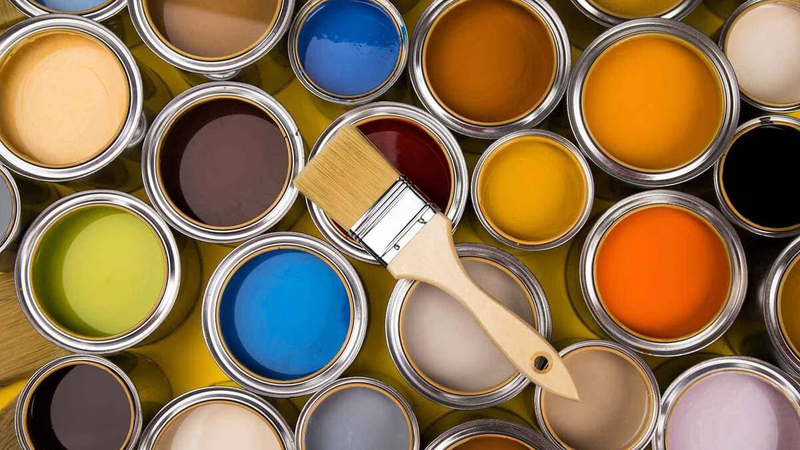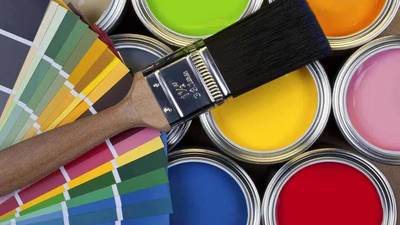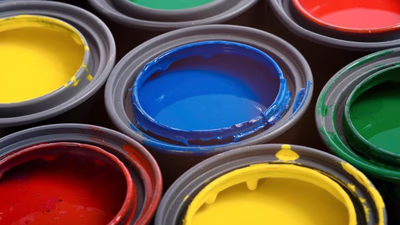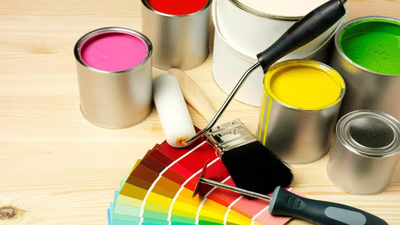
Building paints: quality standards and market insights.
Research the countries and regions to which you plan to export construction paint , including that market's needs, competitors, local requirements, and industry laws and regulations. This information will help you shape your sales strategy. To attract foreign customers, you need effective advertising and marketing. Branding, creating a website or social pages, using digital methods, attending exhibitions and related events, advertising in local and international media, are all tools that you can use to introduce and promote your products.
Communicating directly with foreign potential customers is very important. Using communication tools such as email, telephone, video conferencing, local sales representatives and networking with local dealers and distributors in the target market will help you establish a beneficial relationship and convince your customers. To satisfy foreign customers, make sure that the building paint provided by you has high quality and the necessary standards. Providing quality products will lead to the trust of customers and create long-term relationships. While selling to foreign customers, you must pay attention to local needs and differences. This includes matching colors and products to local tastes and styles, complying with local standards and laws, and providing reliable after-sales service. Investigating cooperation with local representatives and local distributors in the target market can help you enter foreign markets. These agents can have the local knowledge and customer relationships you need and act as local advisors in your sales and business development.
In a competitive global market, you need to offer your competitive advantages to foreign customers. These advantages can include competitive price, high quality, wide range of colors, professional after-sales service, free samples, fast delivery and any other advantages that differentiate you from the competition. Before starting export activities, make sure you comply with your country's export laws and regulations. Also, keep in mind that you may need certain certifications and standards to enter foreign markets. In international business relations, the culture and habits of customers can play a very important role. Before entering foreign markets, try to understand and respect the culture and way of working of potential customers. Finally, building networks and relationships within the industry is invaluable. Attending trade shows, conferences and industry events, participating in relevant associations and organizations, and networking with local industrialists and businesspeople will help you become a successful marketer and seller in the global marketplace.
There are specific standards for building paints, which may include color range, resistance to weather conditions, physical and chemical properties, color fastness, and other technical specifications related to paint. To sell to foreign customers, you need to make sure your building colors meet local standards. In international trade, labeling and product information are very important. You must ensure that your building paints have the necessary labels and information such as product name, shelf life, instructions for use, contents, standard number, safety symbols and other relevant information. Also, in some countries, it is necessary to put the information in the local language of the customers.
In some countries, there are laws and regulations regarding the use of harmful substances in building paints. Some chemicals may be recognized as harmful and prohibited or set certain restrictions on their use. For example, some countries may restrict the use of lead, ammonia and other harmful substances. You must ensure that your products comply with the limits of harmful substances. Health and safety protocols and regulations may be mandatory for building paints. These regulations can include examination of the test. For more detailed and up-to-date information on relevant laws and standards, I recommend contacting relevant organizations and authorities in destination countries or visiting relevant websites.
-

The West Asian region, particularly Iran and Turkey, plays a significant role in the production of construction paints. Iran is a leading producer, while Turkey hosts major companies like AkzoNobel Türkiye and Betek Boya. Saudi Arabia"s rapid construction growth has led to increased demand for building paints, contrasting with Kuwait, Qatar, and Bahrain, which rely heavily on imports due to limited domestic production. The region"s unique environmental conditions necessitate paints that resist weather changes and UV rays. The oil-rich landscape of West Asia offers potential for economic growth through local paint production, leveraging raw materials to reduce costs and enhance sustainability. Countries like Germany and India also contribute significantly to the market with high-quality exports. The architectural focus on aesthetics in West Asia drives demand for diverse color options and environmentally friendly products. As urbanization continues, the need for innovative paint technologies is expected to rise.
-

Understanding the target market is crucial for exporting construction paint. Researching local needs, competitors, and regulations helps shape an effective sales strategy. Effective advertising through branding, digital marketing, and participation in exhibitions can attract foreign customers. Direct communication with potential clients via email, phone, or video conferencing is essential for building relationships. High-quality products that meet local standards foster customer trust and long-term partnerships. Adapting to local tastes in color and style is important, as is providing reliable after-sales service. Collaborating with local representatives can facilitate market entry by leveraging their knowledge and connections. Competitive advantages such as pricing, product variety, and fast delivery can differentiate your offerings in a crowded marketplace.
Compliance with export laws and obtaining necessary certifications are vital before entering foreign markets. Understanding cultural nuances enhances business relations. Networking through trade shows and industry events builds valuable connections within the sector. Adhering to specific standards for building paints regarding technical specifications and labeling is mandatory in many regions. Awareness of regulations concerning harmful substances ensures compliance with health and safety protocols.
-

The construction paint market is experiencing significant growth, driven by increased construction activities in developing nations and a post-economic boom in developed countries. There is a rising demand for environmentally friendly paints, prompting manufacturers to produce low VOC options free from harmful substances. Technological advancements have led to innovations such as self-healing and nano-paints, enhancing product performance. Buyers prioritize high-quality paints that offer durability, resistance to environmental factors, and ease of application. Various types of paints are available, including acrylic, latex, oil-based, alcoholic, epoxy, carbonate, silicate, and silicone paints. Each type has unique properties suited for different applications. The trend towards sustainability is evident as consumers seek paints with lower environmental impact and higher color stability. The market also sees a growing interest in smart paints that can adapt to environmental changes. Overall, the diversity of colors and formulations available caters to the evolving preferences of buyers in the construction industry.
-

The global demand for construction paints has surged due to a construction boom, leading to significant advancements in production and technology among leading countries. Nations like China, the United States, Germany, India, South Korea, and Italy dominate the market by adhering to high-quality standards and international certifications. These manufacturers utilize advanced technologies such as nanotechnology and smart features in their products, enhancing durability and functionality. Innovations include self-healing properties and energy-efficient designs that cater to modern architectural needs. The competitive landscape is bolstered by effective marketing strategies, collaborations with architects, and supportive government policies. Additionally, these countries prioritize environmental standards by minimizing harmful substances in their production processes. Their strong infrastructure and skilled labor force further enable efficient production of a diverse range of high-quality paints that meet global market demands.




